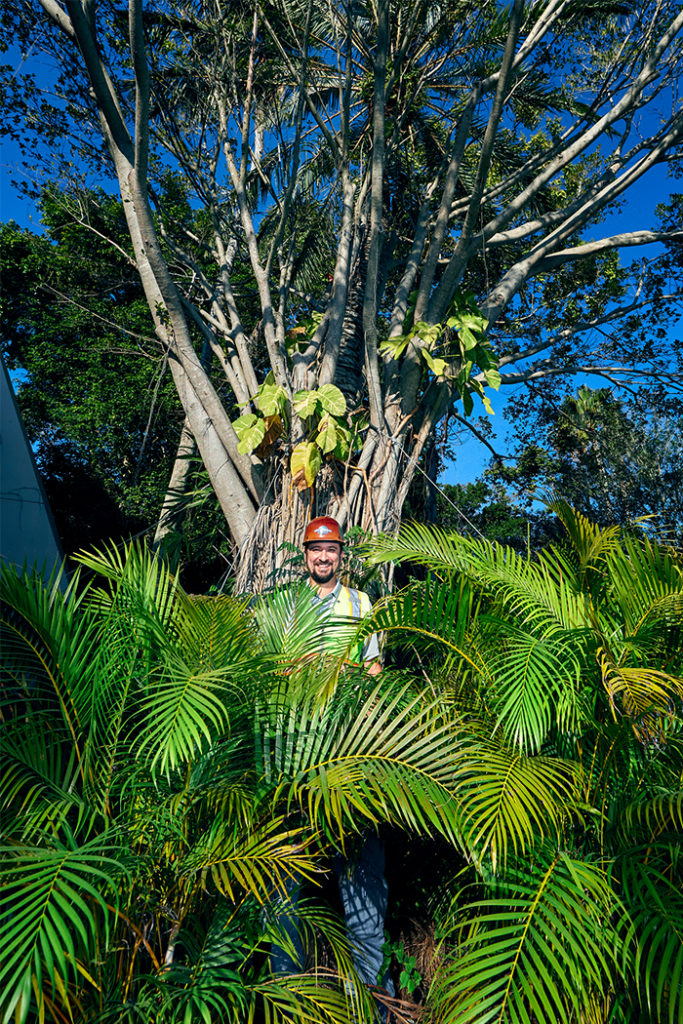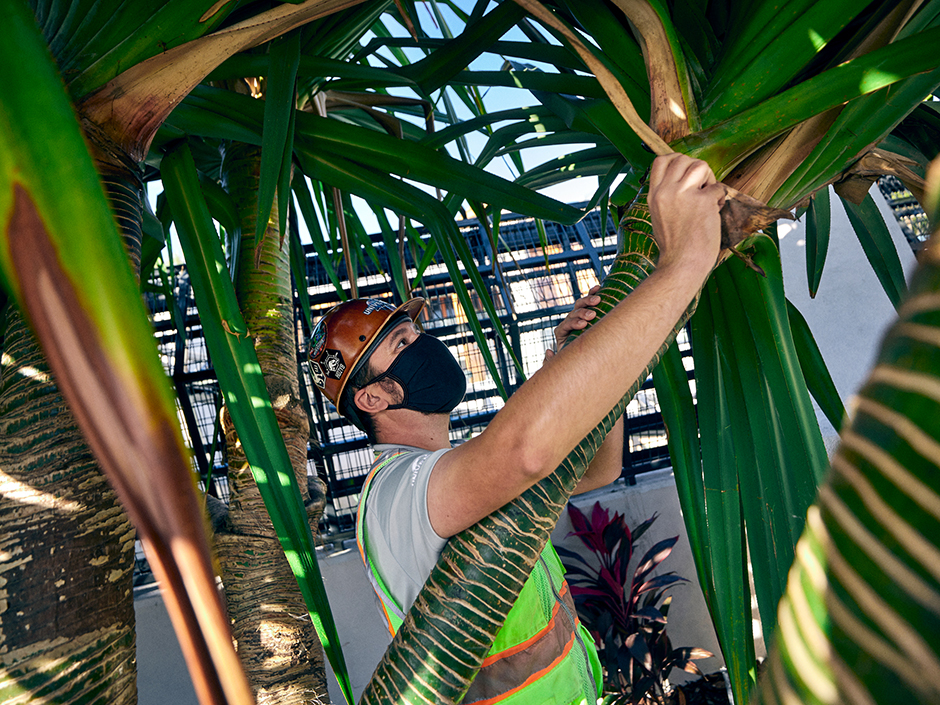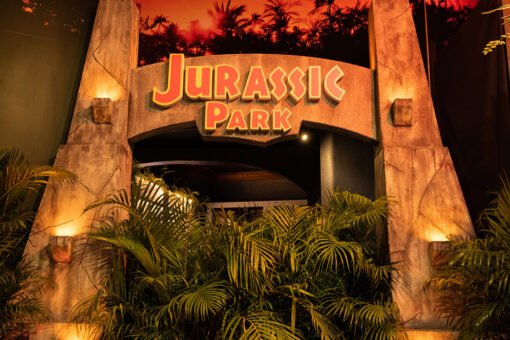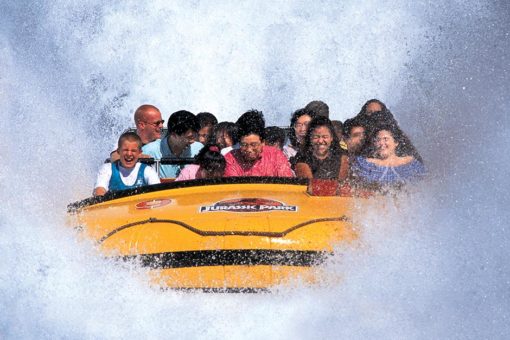As a person who has 16 different plants in her apartment, I would certainly say I was looking forward to talking to the man whom everyone working on Jurassic World VelociCoaster kept referring to as, “The Tree Guy” — Neal Diebold.
Neal, who is a registered landscape architect and an area development manager for Universal Creative at Universal Orlando Resort, has spent the last year-and-a-half of his life ensuring that when Jurassic World VelociCoaster opens in Universal Islands of Adventure, the landscaping not only continues to add to the theming of Jurassic Park, but that it actively adds to the thrill of the new ride.
“One of the big things that Shelby (Show Producer for the ride) has said all along is that we want the attraction to have teeth,” Neal says. “So in my role, that meant adding a lot of kind of gnarly, harsh-feeling plants to the environment. For instance when you go up over the top hat and you dip down, the bed of landscape that you’re going into is a bunch of saw palmettos with big, sharp fronds coming at you. It’ll have that teethy feel and really add to the sense of thrill on the ride.”
Growing up with a father who spent his career working in zoos (Neal even referred to his dad as, “A Zoo Guy”! It’s genetic!), Neal always had an interest in the work that goes into creating themed environments. For Neal, that meant becoming a landscape architect, a sort of combo pack of all of the horticulture and architectural design that goes toward creating the ambience of an outdoor space.
Neal started at Universal in 2017, first working on the area development for Hagrid’s Magical Creatures Motorbike Adventure in Hogsmeade – Islands of Adventure. Once that ride opened in June of 2019, Neal moved over to the Jurassic World VelociCoaster team. At that point, the designs (and even some of the construction) for the new roller coaster had already begun. Neal quickly got up-to-speed on the overall project and what plant specimens had been salvaged for reuse.
“One of the very first things I did on this project was coming out in the middle of the night to help move a 56,000-pound tree,” Neal says. “We call it our hero tree and the team had decided, before I joined, that it was worth saving. It’s a big ficus tree with a palm growing out of the middle of it. You can’t easily buy a tree like that; your best chance to have a really good, large, established tree is to move it from someplace close.”

The team ended up doing exactly that with a whole host of other trees and plant specimens throughout Jurassic Park pre-construction. Several palm trees, ficus trees, clumps of bamboo, and other tropical-esque plants are scattered around behind the parks right now, just waiting to be returned. However, there will be a new neighbor in town when they all get back: a roller coaster.
Neal works closely with several different teams in the execution of a project as big as VelociCoaster — the facility construction team, show set team, facility design team, ride and show team, operations, environmental health and safety, and the horticulture team. He’s a part of the early development where potential plants are being listed, as well as ensuring that once the plants arrive they’re being well taken care of.

“I go from that first conceptual phase where everything is kind of, ‘maybe we could do this, maybe we could do that,’” Neal says. “To where we are now in the project which is, ‘OK now how do we actually make all that real?’ We rely on a lot of park-partner input to make sure that what we do is going to be successful and as easy as possible to maintain. There are a bunch of unique challenges to maintain a tree that’s next to a roller coaster that is zipping by at 70 miles an hour.”
One of the other unique challenges behind landscaping in a theme park is the weather. The tropical, jungle vibes of Jurassic Park are well established throughout the franchise, and so the team at Islands of Adventure needed to find plants that fit that ambience. The options that fit the bill, however, are often from South America or tropical parts of Asia and Africa, where these types of plants are in the just-right environment to thrive.

“Basically you look at the palette, try and figure out what you can replicate, and go from there,” Neal says. “But in Jurassic it can be especially challenging because a lot of the material that looks the part is also very tropical and, while it’s warm in Florida, we’re really more subtropical. A good freeze in Orlando can really do some damage to these plants.”
And so the team gets heaters and blankets for the plants to keep them warm and safe. All of these efforts — from those original lists of potential plants to the ways to help them survive in a climate unlike their own — go toward the crux of Neal’s role: setting the scene.
“That’s the goal,” Neal says. “You want people to know that they are entering a jungle environment. So when they step under the big giant archway and see not only the tropical foliage, but prehistoric looking things like cycads or screw pines — they’ll know they’re in Jurassic Park.”
Don’t forget to sign up for all updates on Jurassic World VelociCoaster.






No Comments